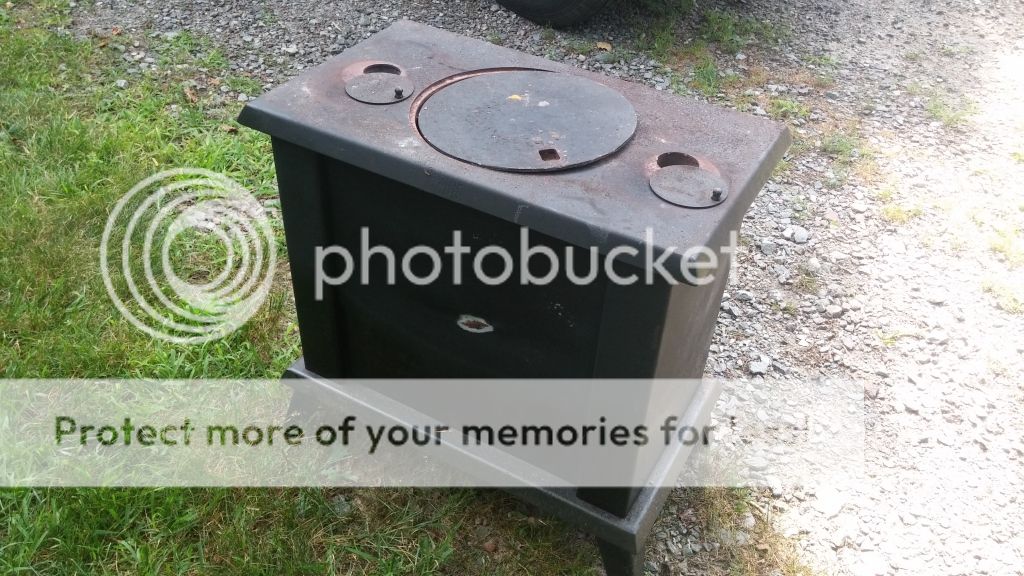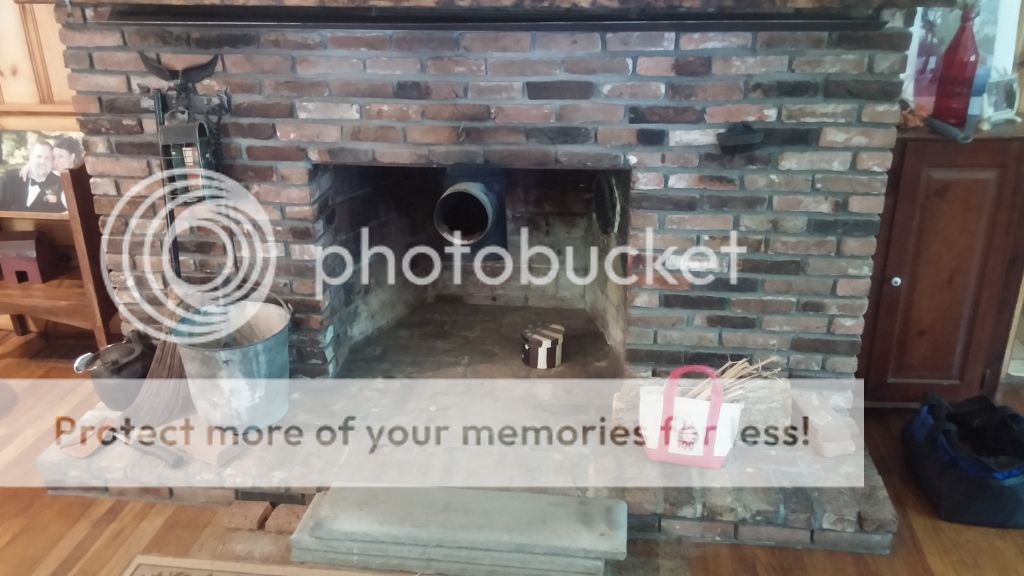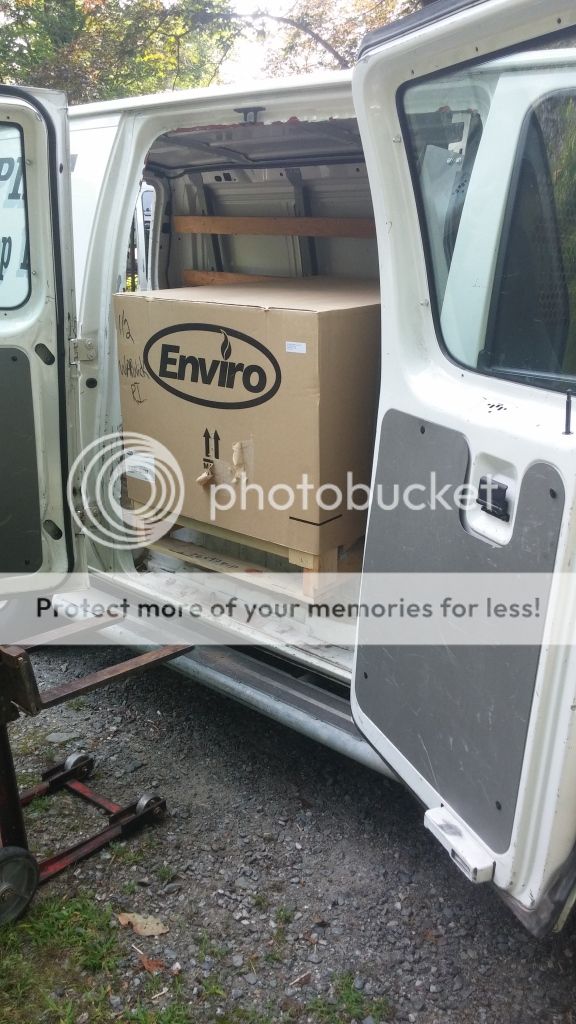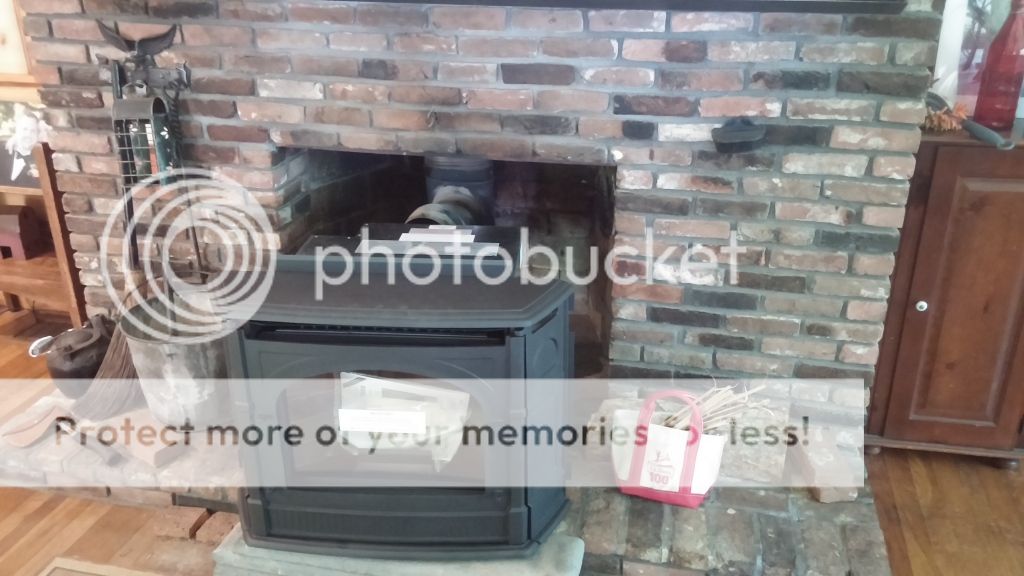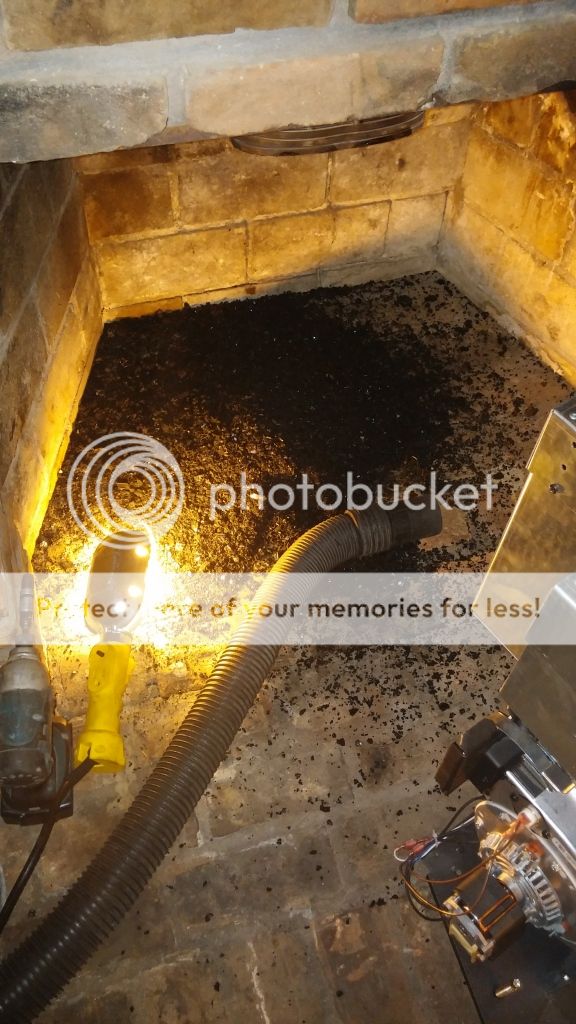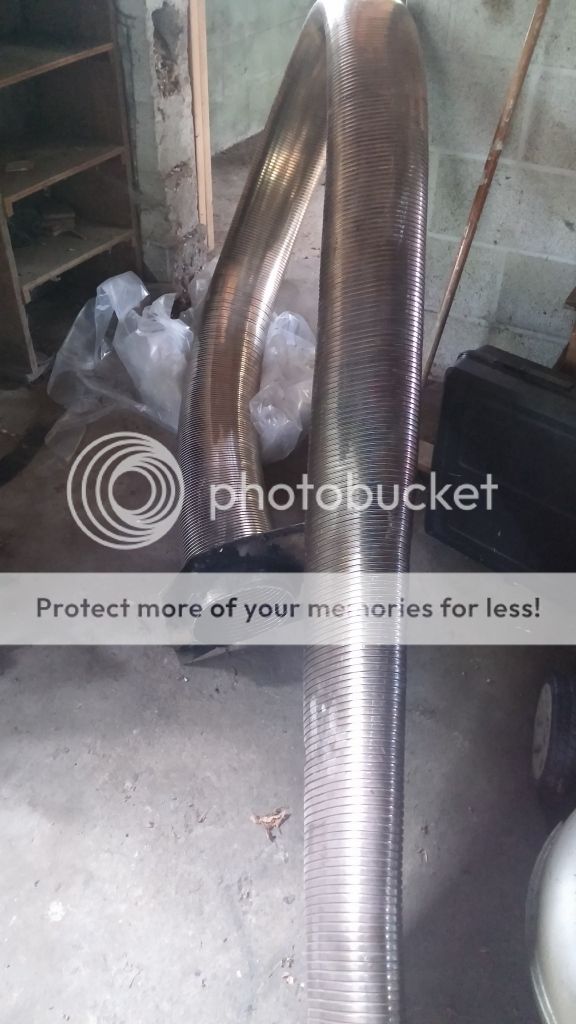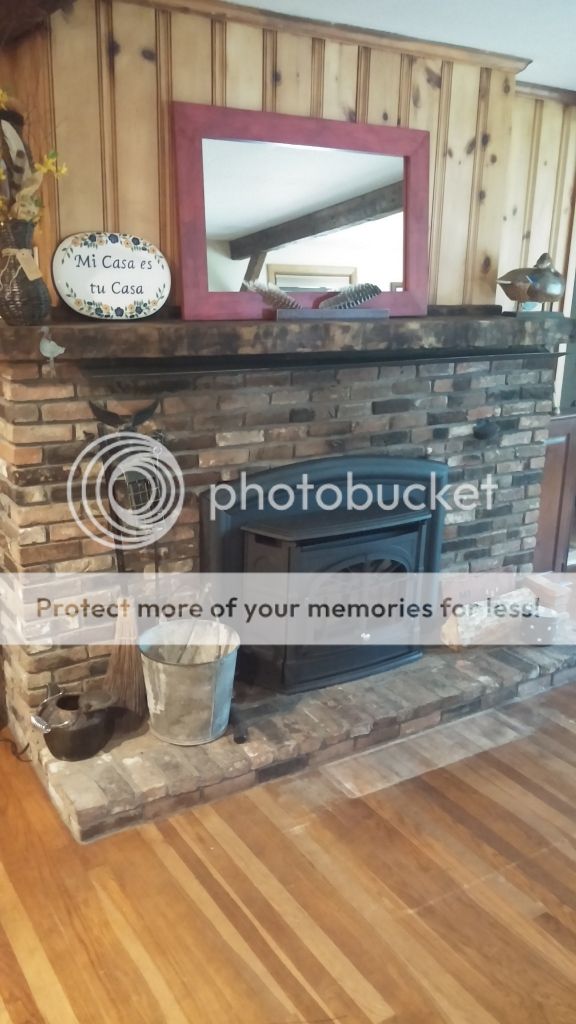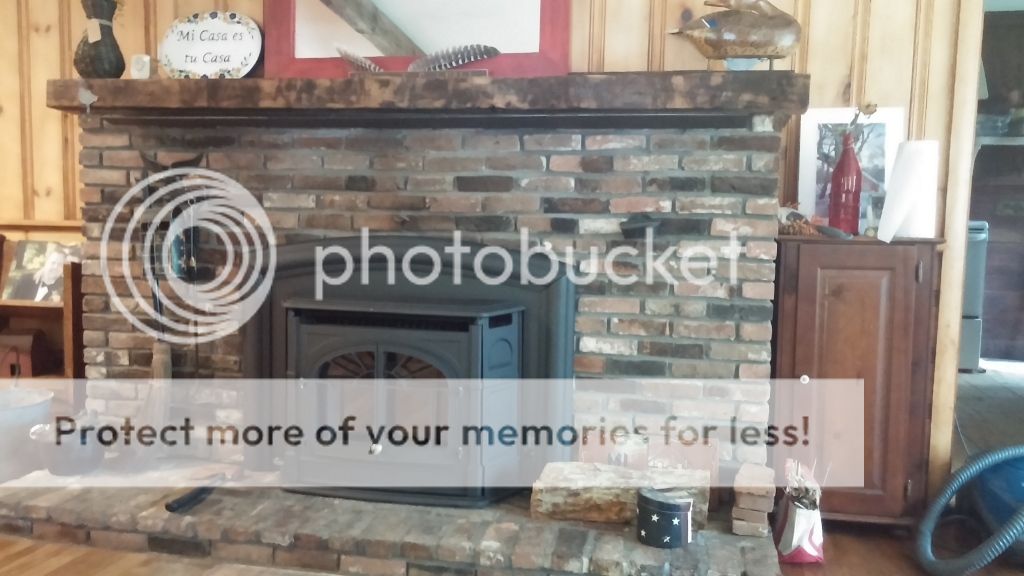Last edited:
Empress insert install today!
- Thread starter whitetailscout
- Start date
-
Active since 1995, Hearth.com is THE place on the internet for free information and advice about wood stoves, pellet stoves and other energy saving equipment.
We strive to provide opinions, articles, discussions and history related to Hearth Products and in a more general sense, energy issues.
We promote the EFFICIENT, RESPONSIBLE, CLEAN and SAFE use of all fuels, whether renewable or fossil.
You are using an out of date browser. It may not display this or other websites correctly.
You should upgrade or use an alternative browser.
You should upgrade or use an alternative browser.
- Status
- Not open for further replies.
alternativeheat
Minister of Fire
Cool, congrats !!
Picky ? It's brand new so you don't like to see those things but on another level consider it Christened ! At least if it's as small as it looks, a touch of stove black or high heat paint will blend it right in. Just dap it on there with a Q Tip or what ever. Maybe the stove installer will do it for you ! The main thing, enjoy the heat, let us all know how it performs for you.
Picky ? It's brand new so you don't like to see those things but on another level consider it Christened ! At least if it's as small as it looks, a touch of stove black or high heat paint will blend it right in. Just dap it on there with a Q Tip or what ever. Maybe the stove installer will do it for you ! The main thing, enjoy the heat, let us all know how it performs for you.
steamguy
Member
Nice looking finished install!
The Enviro dealer will have touch-up. The plain black will be a LOT cheaper than the burgundy ceramic...
The Enviro dealer will have touch-up. The plain black will be a LOT cheaper than the burgundy ceramic...
Bioburner
Moderator
Hello
Very nice. Did they install a fresh air pipe?
No, but I asked if I needed an OAK, and apparently it isn't needed with this stove. Is it something I should get?
oliveone
Burning Hunk
nice new stove! OAK is always good at your not using the air that is warm in the house to go up chimney. You have a small stove but it would not hurt. I would to a test burn when you can have all the doors an windows open as it may stink for the 1-2 hours. In the summer with doors open will not be a big deal. congrats !!
nice new stove! OAK is always good at your not using the air that is warm in the house to go up chimney. You have a small stove but it would not hurt. I would to a test burn when you can have all the doors an windows open as it may stink for the 1-2 hours. In the summer with doors open will not be a big deal. congrats !!
Thanks for the tip, gotta buy some pellets now! I was a little surprised that the stove shop folks didn't show me how to operate the stove. I guess I will have to do some manual reading.
oliveone
Burning Hunk
my friend has the empress I have it very big brother the maxx. Read the book, run stove for test fire then review book again. ask questions someone will help you out. 

Looks great, now fire it up. Nothing lonelier than a dormant stove!
Installer telling you that an OAK is not needed just shows he don't care. It will save you 5% fuel if nothing else. Go for the heated intake style (if possible) which is even better.
Our chimney is located in the center of the house, is it still reasonable/possible to install and OAK?
Owen1508
Minister of Fire
alternativeheat
Minister of Fire
Great idea but in a fireplace install often the outer flue skin ends inside the house or just above the smoke shelf block off plate if used and a single wall liner is run up the chimney. That's how mine is anyway. 23 ft of single wall liner inside a masonry chimney.Easy and super effective, just use the outer flue skin as the intake, if you can.
Have a look at our attached install instructions for how we do it and I am sure you can work something similar out for little expense. Even if you just drill a few air holes in the top of the flue air will come down unless it is packed with insulation or something.
alternativeheat
Minister of Fire
I see. Do you think that this type intake alters the distance to the point of condensation by lowering stack temp? Thus lowering the position up the flue of condensation.I had assumed that as the stove was in the middle if the room it probably had an exposed flue to the ceiling.
It still works in this kind of chimney you describe provided you can draw air down the outer flue. You only need about a foot of heated pipe to make a difference to the intake air temp. We have a few installs like this and it works fine.
Even if the outer flue ends in the house it is worth harvesting the waste heat in the flue to improve the fire performance.
WE try and take the waste heat right up to the point of condensation. That is where you are pushing it too far.
Anyway in my own case using Duravent, I don't think I have any solid run of pipe 18" or greater in length. Duravent caps their sections if I'm not mistaken so interconnecting links of say a 6" piece and a 12 don't add up to 18" of connected flow dead air space flow. That's my horizontal. My vertical is just a 90 deg T with a clean out. I can't speak for the OP's setup in though..
ttdberg
Feeling the Heat
Guys, hope you don't mind if I join the conversation. The renewed interest in OAKs lately has grabbed my attention. My setup is similar to the OP and alternativeheat. P68 sitting on hearth, 3" duravent coming out the back into a T in the fireplace, and from there it's adapted to 4" flex pipe which runs all the way up to the top inside the original fireplace flue, which is 8" stainless steel. No clay, no mortar. Just the stainless pipe. The fireplace is in the center of the house, not on an outside wall. The 4" flex pipe exits the top by extending about 1" beyond a block-off plate attached to the 8" flue. Topping the whole thing off is the original 8" screened flue cap which does a great job at keeping pests and weather out. This has been my setup for 6 years and it has worked very well. I clean the 4" flue from the top every fall, using one of the flexible rod dryer vent cleaning kits. There is hardly any ash when I do the annual cleaning (a testament to using good quality pellets, I guess).
Now, for the OAK part. I've never had one, and until reading all the recent OAK related threads, never really thought I needed one. My house is very tight, and I do realize that I am drawing cold air in with this setup. Heck, I have a wood stove, and that draws cold air in too. No such thing as an OAK for that, so when both stoves are running, that's a lot of cold air coming in. It's worth stating that although at times we can feel cold air coming in specific areas (it has to come from somewhere, right?), in general we have never felt cold because of it - the stoves do keep the house very warm despite the cold air coming in.
Now, I have to say I really love the idea of the Selkirk DT, and if I had to do it all over again, I would go that route if feasible. But my existing setup cost a lot of money and I just can't justify ripping and replacing it, too much investment already. So...If I wanted to install an OAK, I think my only option is to run 3" OAK flex pipe all the way to the top, snaking it inside the 8" flue - alongside the 4" flue pipe that's already there (probably some fun challenges awaiting there). I have read about 2" OAK flex pipe, but the Harman manual mentions 3" pipe? Anyway, that should effectively provide the same benefit as the DT, at least with respect to pre-heating the air, since it will run the full flue length with the heated flue vent. From what I have read, once the OAK flex pipe exits the top, I would need to take steps to ensure it terminates at least 12" away from the 4" exhaust flue to prevent the possibility of drawing exhaust air right back into the stove.
Do I have this right? Am I over complicating the situation, or is there a better way? As much as I would like to do this myself, I don't trust that I would do it right, so I am likely going to hire a local stove/chimney/flue guy to do it. In terms of time and materials, what should a job like this cost (roughly)?
Now, for the OAK part. I've never had one, and until reading all the recent OAK related threads, never really thought I needed one. My house is very tight, and I do realize that I am drawing cold air in with this setup. Heck, I have a wood stove, and that draws cold air in too. No such thing as an OAK for that, so when both stoves are running, that's a lot of cold air coming in. It's worth stating that although at times we can feel cold air coming in specific areas (it has to come from somewhere, right?), in general we have never felt cold because of it - the stoves do keep the house very warm despite the cold air coming in.
Now, I have to say I really love the idea of the Selkirk DT, and if I had to do it all over again, I would go that route if feasible. But my existing setup cost a lot of money and I just can't justify ripping and replacing it, too much investment already. So...If I wanted to install an OAK, I think my only option is to run 3" OAK flex pipe all the way to the top, snaking it inside the 8" flue - alongside the 4" flue pipe that's already there (probably some fun challenges awaiting there). I have read about 2" OAK flex pipe, but the Harman manual mentions 3" pipe? Anyway, that should effectively provide the same benefit as the DT, at least with respect to pre-heating the air, since it will run the full flue length with the heated flue vent. From what I have read, once the OAK flex pipe exits the top, I would need to take steps to ensure it terminates at least 12" away from the 4" exhaust flue to prevent the possibility of drawing exhaust air right back into the stove.
Do I have this right? Am I over complicating the situation, or is there a better way? As much as I would like to do this myself, I don't trust that I would do it right, so I am likely going to hire a local stove/chimney/flue guy to do it. In terms of time and materials, what should a job like this cost (roughly)?
Last edited:
ttdberg
Feeling the Heat
By the way, whitetailscout - sincere thanks for sharing this, I love the play by play with pictures!
By the way, whitetailscout - sincere thanks for sharing this, I love the play by play with pictures!
No problem, happy to share. Can't wait for some pictures of the stove in action!
PELLETCONVERT
New Member
CongratsNo problem, happy to share. Can't wait for some pictures of the stove in action!
 ! looks nice
! looks nice- Status
- Not open for further replies.
Similar threads
- Replies
- 20
- Views
- 835
- Replies
- 11
- Views
- 931
- Replies
- 7
- Views
- 369
- Replies
- 0
- Views
- 321


